As ervas daninhas são más, todos os horticultores concordarão com isso. O seu crescimento excessivo leva a uma diminuição do rendimento em 50-70%, esgotamento do solo, deterioração da qualidade das culturas cultivadas. No artigo, falaremos sobre maneiras de se livrar das ervas daninhas na trama, tocando em todas as nuances.

Por ervas daninhas entendem-se as plantas silvestres ou semi-culturais que não estão sujeitas ao cultivo humano e que causam danos ao sujar as áreas cultivadas. Estas plantas são extremamente resistentes e capazes de se propagarem rapidamente.
Diferem em termos de duração de vida, estrutura, métodos de reprodução, pelo que não existe uma forma geral de erradicar as ervas daninhas. Mas para que a luta seja bem sucedida, é necessário estudar os "inimigos".
Conteúdo do artigo
Variedades de ervas daninhas
Existe um sistema ramificado de classificação das pragas das plantas. Por exemplo, de acordo com a duração do ciclo de vida, as ervas daninhas são distinguidas:
- Anuais. A maioria destas plantas propaga-se por sementes e o seu período de vegetação dura um par de meses. Incluem as ervas daninhas da primavera e do inverno: erva-dos-escudos, ambrósia, absinto, erva-dos-campos, miosótis, cardo-dos-jardins, erva-dos-bromos, mirtilo, portulaca e outras.
- Shiritsa, amoranthus
- Cardo de jardim
- Absinto de Ambrosia
- Bienais. O período de vegetação destas plantas dura dois anos. No primeiro ano, a roseta de folhas da raiz é formada ativamente, os nutrientes são acumulados, e no segundo ano - floração e frutificação. Este tipo de plantas inclui: jarutka do campo, bolsa de pastor, marmota comum, camomila, violeta do campo, relva medicinal, cenoura selvagem, etc.
- Bolsa de pastor
- Nabo
- Cenoura selvagem
- Plantas perenes. As ervas daninhas são caracterizadas pelo facto de crescerem no mesmo local durante mais de 4 anos. Esta longevidade é possível devido ao constante crescimento e desenvolvimento do sistema radicular. Mesmo quando a parte acima do solo morre, a planta encontrará a força para voltar a crescer, se uma parte do rizoma for preservada. Estes vizinhos perigosos e indesejáveis das plantas cultivadas incluem: dente-de-leão medicinal, erva de trigo, cardo de leite, plátano, cardo do campo, trevo rasteiro e outros.
- Dente-de-leão medicinal
- Tanchagem grande
- Cardo dos campos
De acordo com o tipo de nutrição, as ervas daninhas são parasitas - existindo apenas à custa das plantas hospedeiras, semi-parasitas - alimentando-se parcialmente de substâncias úteis das culturas hortícolas, não-parasitas - com o seu próprio sistema de nutrição.
De acordo com o local de crescimento, as plantas dividem-se em vegetais e plantas de relva - o que não as impede de crescer num jardim de flores ou numa estufa.
Métodos de luta
Digamos desde já que o melhor remédio que ajudará a eliminar as ervas daninhas e a erva para sempre não existe.
A maneira mais eficaz de derrotar as ervas daninhas é uma abordagem integrada que combina regularidade e uma combinação de vários métodos de luta. Eles são selecionados separadamente para cada caso específico. Das ervas daninhas no local será relevante para um método, da grama no canteiro de flores - outro, e das ervas daninhas nos canteiros - o terceiro.
Existem vários métodos de luta contra a reprodução das ervas daninhas:
- agrotécnico;
- biológica;
- química.
Vamos analisá-los em pormenor.
Agrotécnica
Existem vários métodos agrotécnicos para destruir as ervas daninhas. Estes consistem na aplicação de várias técnicas e tecnologias para impedir o crescimento e a reprodução das infestantes.
Os métodos agrotécnicos dividem-se em métodos de extermínio e métodos preventivos.
Exterminação
Este método inclui:
- remoção mecânica;
- provocação de sementes;
- esgotamento;
- smothering;
- desiccation;
- freezing;
- burning.
Not all methods are applicable to the vegetable garden. The most popular are mechanical destruction of weeds, freezing. Less frequently applied provocation of seeds to germination and burning.
Mechanical removal. An effective method that allows you to get rid of weeds in the vegetable garden, including weeding and digging. The work can be done with manual or mechanized weeding, as well as digging with the use of hand tools and machines.
Weeding beds is familiar to every gardener, without it there is no way to do without it in the fight for the cleanliness of the site. This procedure helps to get rid of weeds at different stages of development and is done both manually and with the use of technical means, such as a motorized cultivator. It allows you to quickly weed the vegetable garden in a large area while processing the inter-row.
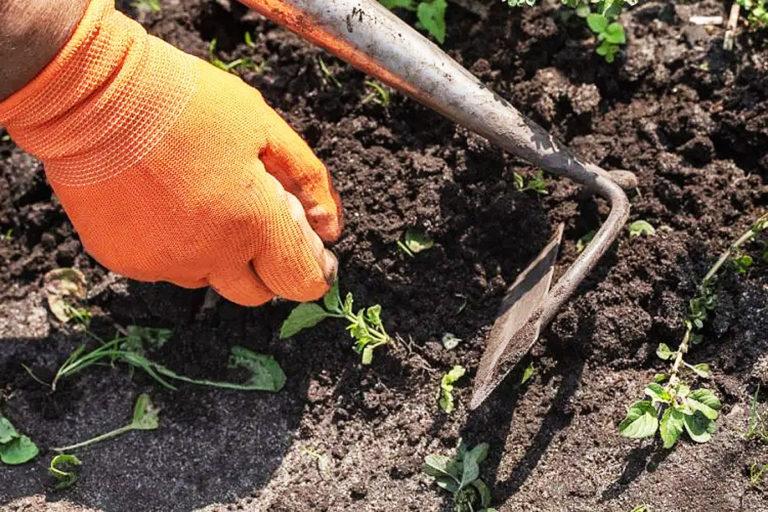
Digging a vegetable garden allows you to physically destroy weeds and their roots, especially if they are in the upper layers of the soil. It can be carried out in spring and fall with hand tools – a spade or forks, as well as a motorized block.
When digging a vegetable garden with forks, the roots of harmful plants remain intact and it is convenient to remove them. Whereas digging with a shovel or a power tiller cuts the roots into small segments, from which in the future whole colonies of new weeds can sprout.
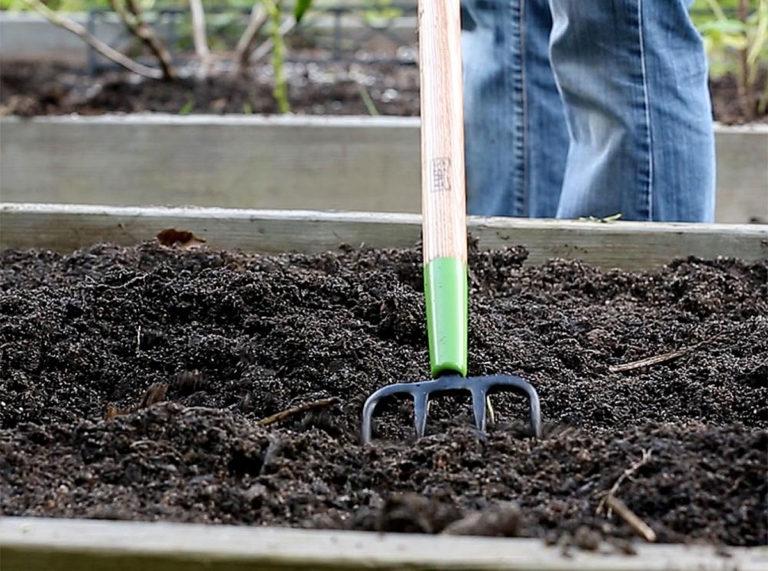
For example, when there are pockets of wheatgrass on the plot, then if you dig the beds with a spade, it will increase the area of spread of the root-propagating weed. At the same time, digging with a pitchfork will not work because of the density of roots. To get rid of wheatgrass for a long time, it is better to sift the soil from the roots of the weed when digging. For sifting, you can use a construction mesh with a mesh of 10*10 or 15*15.
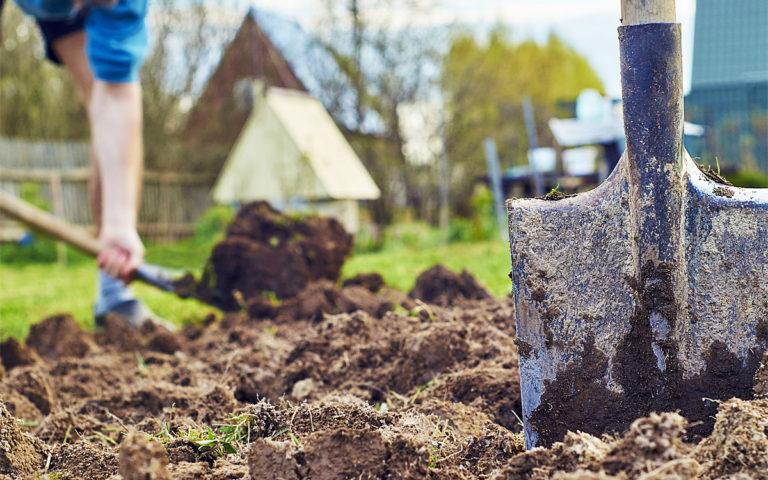
Soaking. With deep digging, the roots are on the surface and are killed by frost. Digging is done in late fall in large pieces with overturning the layer. Autumn digging has additional pluses – improvement of soil structure, destruction or weakening of pests and diseases in the soil.
Queimadura weeds is one way to control them, especially on small plots. However, it should be remembered that this method can be dangerous and fire safety must be observed.
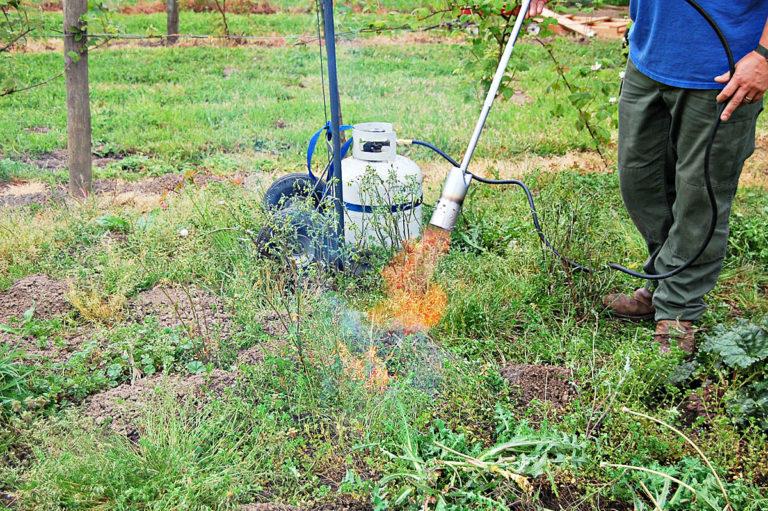
Prevenção
Prevention is important in weed control. Preventative weed control measures can help prevent weeds from occurring or reduce the number of weeds. Here are some tips to follow.
- Do not use fresh organic matter. Fresh manure contains weed seeds in large quantities, which will actively grow once in the soil. Ideally, the manure should be fermented for a year or two, after which everything capable of germination will die from the high temperature at which decomposition occurs.
- Organize drip irrigation. It will provide the proper amount of moisture only useful crops and provoke the drying of weeds.
- Fence the beds with slate, dug into the ground to a depth of 50 cm. This will prevent the transformation of cultivated plants into harmful ones. We are talking about raspberries, mint, topinambur, horseradish, usually sprawling beyond the boundaries allotted for them.
- Observance of crop rotation. Each plant species should return to “its place” not earlier than in 4 years.
Biológico
This category of ways to destroy weeds includes:
Química
Chemical measures of weed eradication are the most effective. They are used when other methods have failed and proved useless. Opponents of the use of herbicides on the plot are many. But modern manufacturers offer preparations whose decay period in the soil is reduced, and due to the inclusion of surface-active substances (surfactants) in the composition, prices have become lower.
Chemical methods allow you to quickly get rid of weeds without much effort. The principle of action of such preparations is to inhibit photosynthesis, protein synthesis or respiration in plants, which leads to their death.
Herbicidas
Herbicides are chemicals specifically designed to kill weeds. They are classified into continuous and selective herbicides. In addition, they can be contact – causing damage to the weed at the point of contact with the poison, or systemic – penetrating into the plant and destroying it from the root.
Herbicides of continuous action are designed to destroy any vegetation, including quarantine weeds. Selective-action pesticides, another name for “selective”, damage only certain species of plants and are used in the cultivation of agricultural crops.
The former include means that destroy all plants on which they fall. These are “Roundup”, “Tornado”, “Euron” – all these substances are systemic, continuous action.
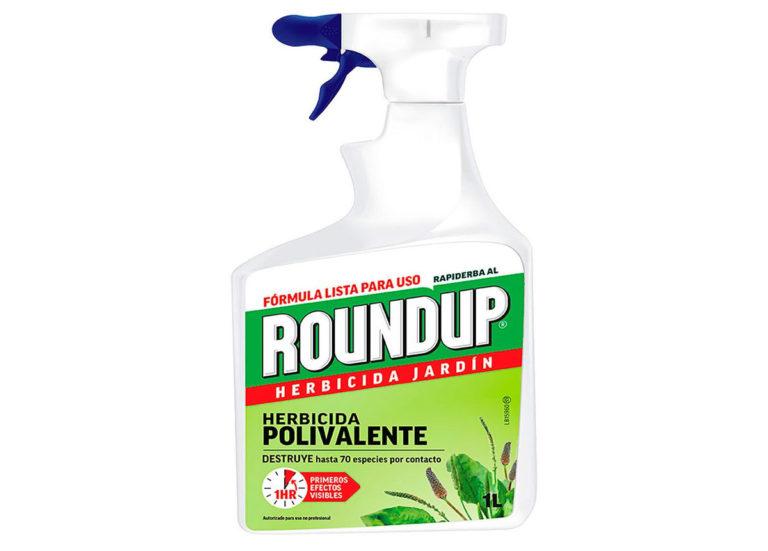
To the second should refer to means that act only on a certain type of plant, without causing harm to the rest. These are “Miura”, “Lontrel”, “Lintur”. Such preparations are most often applied topically and allow you to quickly achieve the desired result.
The optimal remedy for weeds (according to reviews) is Roundup. It contains the active ingredient glyphosate and easily copes with any kind of weeds.
Choosing a chemical, it is not unreasonable to pay attention to its characteristics:
- mechanism of action;
- selectivity;
- duration of action;
- active ingredient;
- timing of application;
- method of application;
- form of release.
Before using the herbicide, read the instructions carefully and follow all safety instructions. When preparing the working solution and treating the area, use protective equipment such as gloves and a mask, and avoid contact with the herbicide on the skin or eyes.
Métodos populares de controlo
The experience and observations of gardeners and vegetable gardeners, accumulated over generations, allow you to remove weeds using folk remedies. The advantage of such means is that they can be prepared from ingredients that can be found in every home or purchased in the nearest store.

The use of folk remedies instead of chemical preparations, helps to preserve the ecological balance in the garden or vegetable garden. They do not harm the soil, water, living organisms, which contributes to the preservation of biodiversity.
It should be noted that improvised remedies may be less effective or have a limited effect compared to chemical preparations. Therefore, before using folk remedies, it is recommended to choose the most appropriate method of control.
Here are some effective folk remedies for weeds with recipes and methods of application.
Queimadura
Burn out the grass, so that it does not grow, you can also use an ordinary blowtorch or burner. The main thing is not to overdo it and carry out the treatment with a sliding flame, quickly. This is enough to damage the plant.
This method is suitable for small areas, for example, for burning grass along the path and on it.
Sal
Often as an effective weapon against unwanted vegetation is ordinary table salt. Sprinkle this product on the seams between the tiles or between the rows – places where there is a cluster of weeds. The main thing – do not accidentally fall on useful crops. Salt from weeds – a radical measure and helps in most cases.
Vinagre
The remedy from weeds can be made with your own hands from vinegar. You can prepare the remedy in different ways:
- Pour a 9% solution of acetic acid into the sprayer and treat the weeds. The method is suitable for spot treatment of plants.
- Take 80% acetic essence, dilute it in a ratio of 1:1 with water. You can use 70% acetic acid diluted to 40%. Water or spray weeds with this solution.
- Take 3 liters of boiled cold water, add 6 tablespoons of salt and 2.5 cups of 9% vinegar. The solution can be watered or sprayed.
Álcool
The method is to water the beds with a solution of alcohol and water a month before the intended sowing. The composition will provoke a rapid growth of weeds, and after some time it is necessary to carry out extermination measures. To prepare the mixture, it will be necessary to observe the proportion in the ratio of 150 g of vodka or 70 g of alcohol per 1 liter of water. For a plot of 2.5 acres, 10 liters of solution will be needed.
Água a ferver
A good effect against weeds gives boiling water. All you need to do is to pour boiling water on the places where weeds have proliferated. The procedure can be repeated until the desired result is achieved.
Resultado
Get rid of grass on the plot forever, unfortunately, it will not work. Even if the vegetable garden in the fall will be clean, and it will seem that you have coped with weeds, it is not so. The remnants of roots, seeds, carried by wind and birds, will sprout anew in the spring. But it should be understood that the more competent measures to eliminate weeds, the better the result will be.

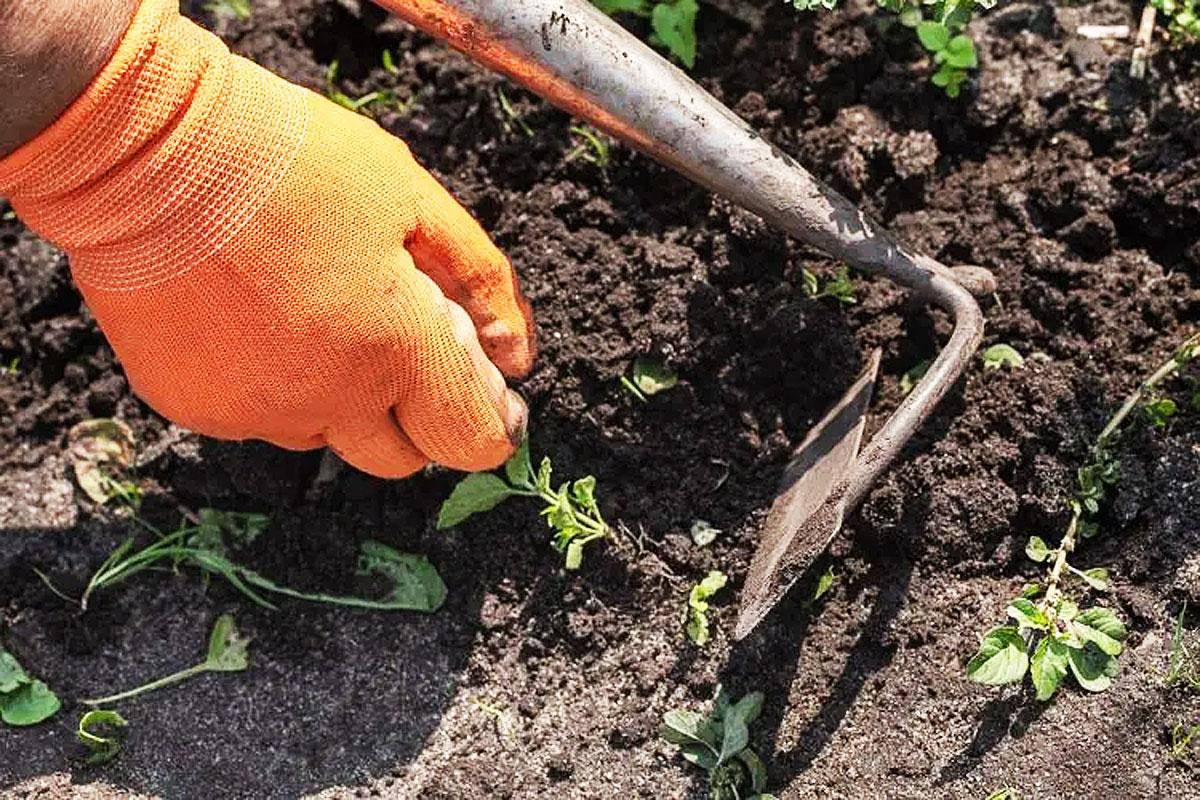
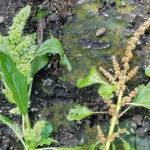
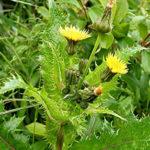
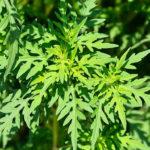
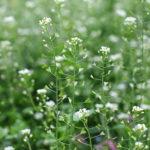
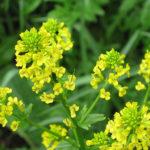
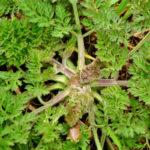

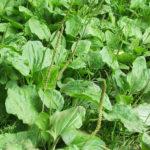
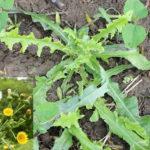
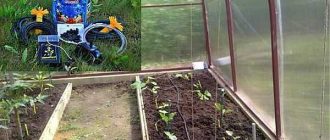
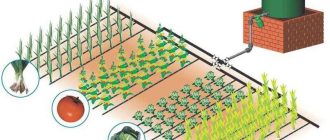
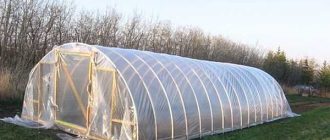
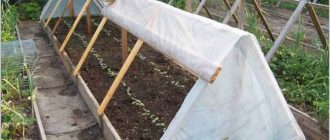
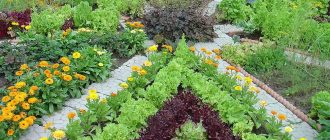
Absolutely! I used mulch in my veggie garden, and it made a huge difference. Keeps the weeds down and helps the plants thrive. I also love hand-pulling them when they’re small. It’s kinda relaxing and gives me a chance to connect with my garden!